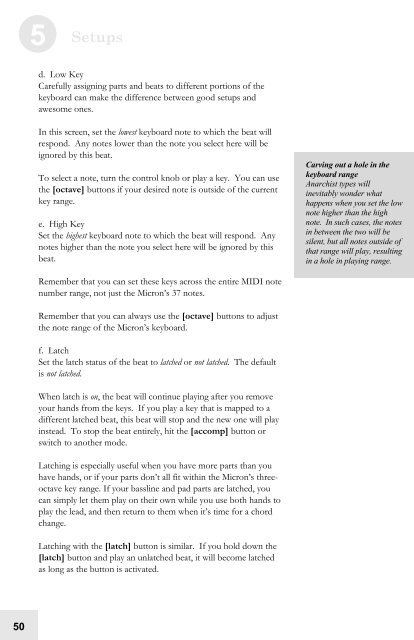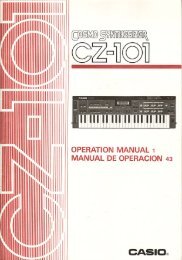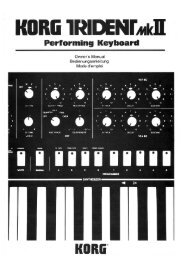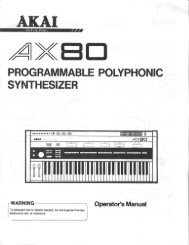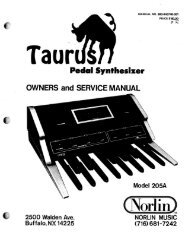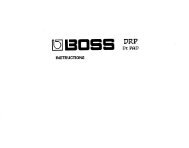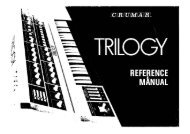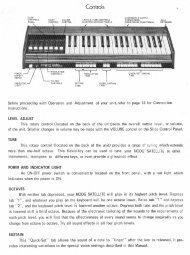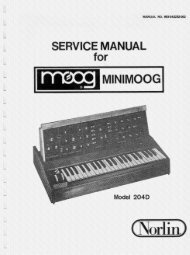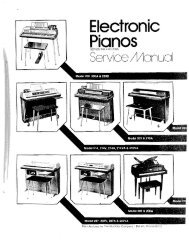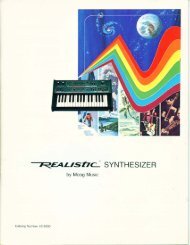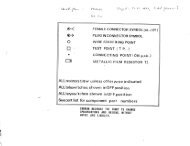Alesis Micron Owners Manual.pdf - Fdiskc
Alesis Micron Owners Manual.pdf - Fdiskc
Alesis Micron Owners Manual.pdf - Fdiskc
You also want an ePaper? Increase the reach of your titles
YUMPU automatically turns print PDFs into web optimized ePapers that Google loves.
50<br />
5 Setups<br />
d. Low Key<br />
Carefully assigning parts and beats to different portions of the<br />
keyboard can make the difference between good setups and<br />
awesome ones.<br />
In this screen, set the lowest keyboard note to which the beat will<br />
respond. Any notes lower than the note you select here will be<br />
ignored by this beat.<br />
To select a note, turn the control knob or play a key. You can use<br />
the [octave] buttons if your desired note is outside of the current<br />
key range.<br />
e. High Key<br />
Set the highest keyboard note to which the beat will respond. Any<br />
notes higher than the note you select here will be ignored by this<br />
beat.<br />
Remember that you can set these keys across the entire MIDI note<br />
number range, not just the <strong>Micron</strong>’s 37 notes.<br />
Remember that you can always use the [octave] buttons to adjust<br />
the note range of the <strong>Micron</strong>’s keyboard.<br />
f. Latch<br />
Set the latch status of the beat to latched or not latched. The default<br />
is not latched.<br />
When latch is on, the beat will continue playing after you remove<br />
your hands from the keys. If you play a key that is mapped to a<br />
different latched beat, this beat will stop and the new one will play<br />
instead. To stop the beat entirely, hit the [accomp] button or<br />
switch to another mode.<br />
Latching is especially useful when you have more parts than you<br />
have hands, or if your parts don’t all fit within the <strong>Micron</strong>’s threeoctave<br />
key range. If your bassline and pad parts are latched, you<br />
can simply let them play on their own while you use both hands to<br />
play the lead, and then return to them when it’s time for a chord<br />
change.<br />
Latching with the [latch] button is similar. If you hold down the<br />
[latch] button and play an unlatched beat, it will become latched<br />
as long as the button is activated.<br />
Carving out a hole in the<br />
keyboard range<br />
Anarchist types will<br />
inevitably wonder what<br />
happens when you set the low<br />
note higher than the high<br />
note. In such cases, the notes<br />
in between the two will be<br />
silent, but all notes outside of<br />
that range will play, resulting<br />
in a hole in playing range.


